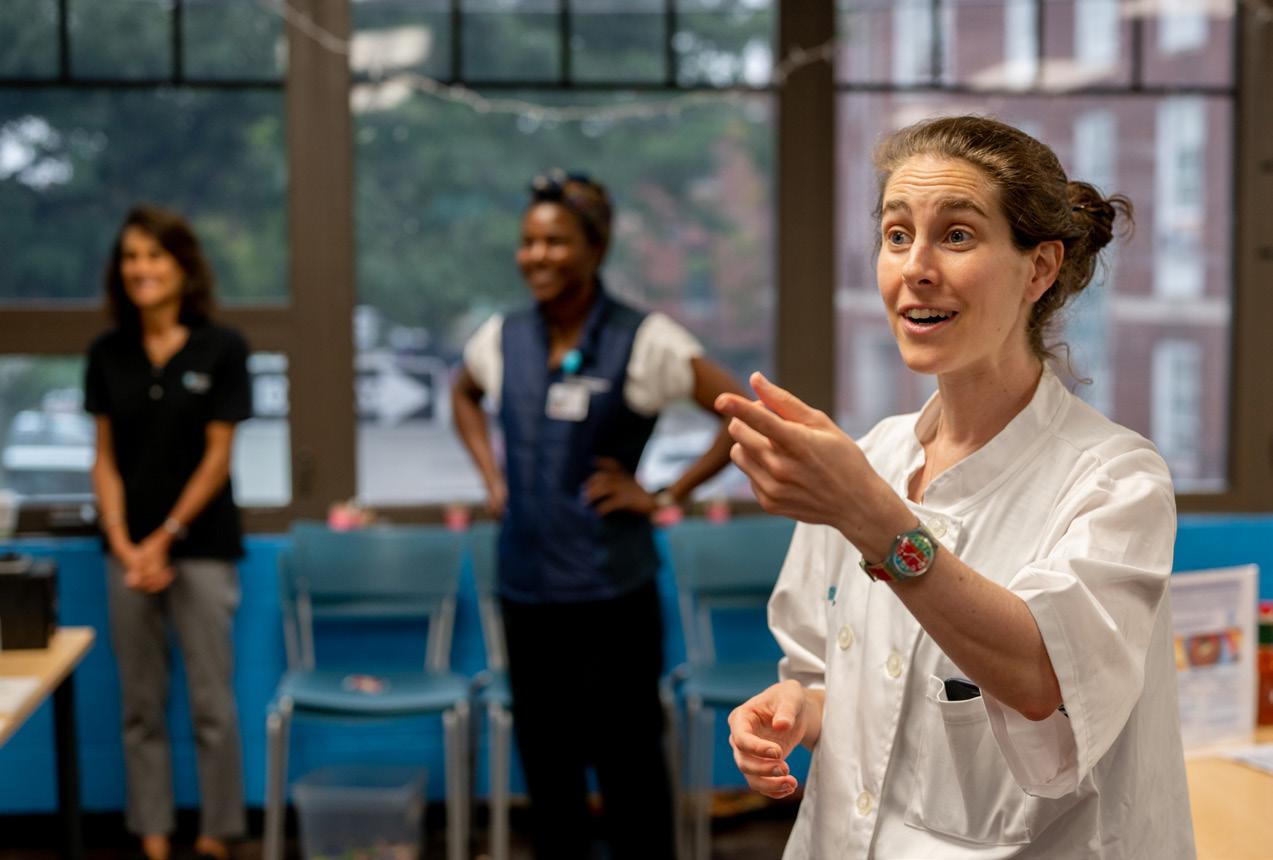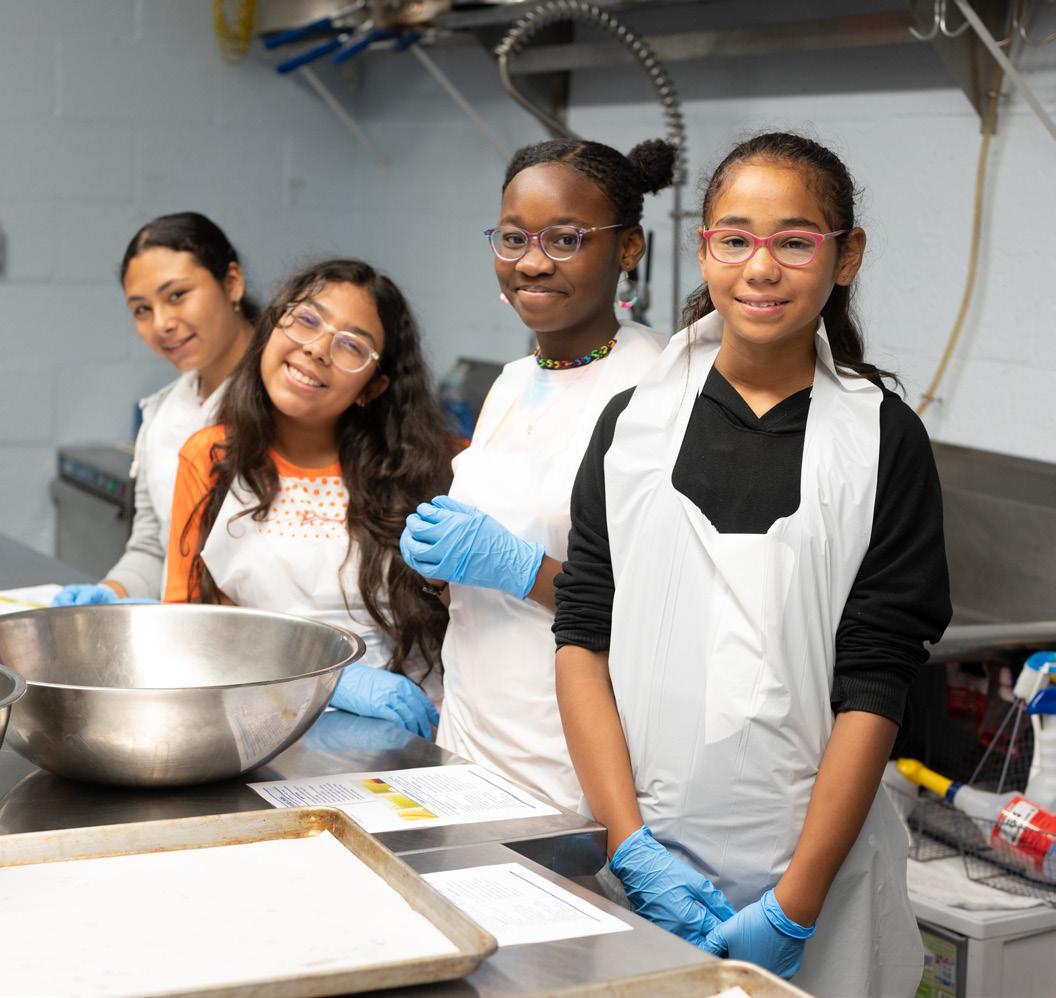
4 minute read
A recipe for healthy eating
Community Health keeps food and nutrition front of mind
“How many of you like to cook?”
Emma Steinberg, MD, a chef and Newton-Wellesley pediatric hospitalist, posed that question to 30 middle schoolers at the start of a special cooking event at the Waltham Boys and Girls Club late last summer.
Many quickly raised their hands, and several chimed in with what they like to make—and eat.
NWH Community Health’s Lauren Lele and Commie Ayuk joined Dr. Steinberg in leading the fun event, with generous support from the hospital’s Nutrition and Food Services team.
Together, they guided the kids in learning how to make three nutritious snacks for their fellow summer campers: home-baked tortilla chips, black bean dip, and green smoothies.
In prepping the smoothie’s ingredients, the comments kept flying. “It smells so fresh.” “So delicious.” They combined ripe banana, pears, grapes, and oranges with spinach and chopped kale. When it came to tasting, one boy exclaimed “I called next!” Even a skeptic wondered, “Can I have more?”
The drivers of health
To Lauren Lele, MPA, CAVS, Senior Director of Community Health and Volunteer Services, the event was a natural extension of both the hospital’s relationship building and a strong commitment to food access.
“Nutrition security and equity needs to be front of mind,” she emphasizes. It’s part of “looking at the drivers of keeping people healthy and a priority for both NWH and Mass General Brigham as a whole.”
She sees a growing understanding of the impact of nutrition on community well-being. Along with that has come not only a focus on access to food but also more awareness of culturally relevant foods.
“Many people don’t think of food access as an issue around here,” notes Lauren. “It is.” While the prevalence may vary across communities, “it’s an issue everywhere.”


Embedded in the community
Lauren points to the hospital’s collaboration with the Boys and Girls Club as “one of many powerful examples of us being embedded in the community.”
“We have a great relationship with them,” she notes. Reflecting on their common goals, she points to Waltham’s “Summer Eats” program as another community-based effort uniting the hospital and the club. “Once school is out, kids still need meals,” Lauren says simply. Funding from NWH helped to ensure children had access to food throughout the summer.
As Lauren explains, Newton-Wellesley also plays a significant role as a convener of local organizations who work in the space of food access. Three times a year, NWH brings together partners ranging from community farms to food pantries to schools to city and state officials to foster collaboration.
Outreach efforts over time have built a foundation of community connections. “What we do in this space is part of our responsibility to the health of the community,” she reflects.
Sharing of food and culture
Having trained and worked as a chef in New York City before pursuing medicine, “I’ve always thought about the connection between food and health,” Dr. Steinberg says.
When the opportunity arose to take part in the Waltham event, she jumped at it. “First and foremost, being with kids is always the most fun,” she says. “I can see and hear what gets them excited.”
Food is universal yet also very personal. She loved how preparing food together enabled the middle schoolers to share their own experiences and stories.
“I wish we all had more opportunities for this kind of safe and communal sharing of food and culture,” she reflects. “It’s so powerful.”
A healthy relationship with food
Looking back at the event’s lessons, Dr. Steinberg recounts how one girl, unprompted, summed up its message beautifully: “We can have a healthy relationship with food.”
That’s a challenge for all ages. Unfortunately, “people’s relationship with food is often broken,” she says.
For kids in their tween years, “they’re at an impressionable age and still so open to learning.” In teaching moments, she tries to nurture positive peer pressure, so they encourage each other.
Working with young people always encourages her. “We underestimate the youth in our society,” she believes. “I think they have so much to contribute.”






